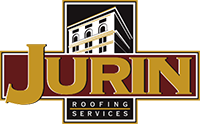How Roof Leaks Affect Your Bottom Line
At some point most buildings will experience roof leaks. It’s just one of those things that can’t always be avoided, especially as your roof gets closer to the end of its use life or regularly experiences high foot traffic. And with fall and winter right around the corner your odds for roof leaks associated with heavy rain or snow go up.
For many building owners and property management companies a watertight roof system is important but not always top priority. Sometimes money that should be spent on keeping your roof watertight gets siphoned off to what appears to be more urgent issues.

Maintaining a roof or planning a roof replacement can be a major investment and it can seem quite acceptable to put it off and use that bucket for just a little longer. I mean what can it really hurt? You’d be surprised.
Ignoring roof leaks can end up costing you more in the long run in ways you may have not even considered. Here are a few items to think about on how roof leaks can affect your bottom line.
Negative Effects of Active Roof Leaks
Customer Perception
The smallest visible leak or closing off an area because of a roof leak can give the perception of an unsanitary environment which can lead to lost business.

Interior Damage
Carpets, ceiling tiles, computers, office furniture, and not to mention the cost of clean-up and repainting.

Production Downtime
Having an unsafe work area or having to shut down a manufacturing line could result in thousands of dollars in lost productivity.
Roof Deck Damage
Leaks that are not addressed can lead to roof deck deterioration which can cause not only safety issues but also expensive deck replacement.

Larger Expenses Down the Road
Roof leaks that are left unaddressed can shorten the use life of your roof system leading to early roof replacement.
Higher Energy Costs
Roof leaks can lead to moisture trapped within your roof system which lowers the R-value of insulation leading to higher heating and cooling costs.
Putting a Roof Replacement Off Too Long
The decision can be made to continue with roof repairs to just get by and defer the investment in a new roof system. However those repair costs throughout the year will add up and can become a wasted investment.
When you are ready to make the decision between maintaining or replacing a roof, take a look at your annual maintenance costs. If those costs are close to or exceeding what a new roof budget is, it may be time to replace the roof system.
When is it time to stop repairing and start replacing?
Make sure your roofing contractor is looking out for your best interests and that they also understand your business. Talk with other business owners or companies to make sure you have a reliable and honest roofing company working for you.
Ask the roofing company who just wants to continue making repairs “How’s the system look underneath?” or “How many more years of life does my roof have?” If your existing roof system underneath the top layer is excessively wet and/or damaged that may lead to bigger concerns. If your roofing contractor can’t tell you how many years are left on your roof system then it’s time to find a new contractor.

Building owners and property managers should use their knowledge and experience in making the right decision. If you are looking for a remaining estimated use life for your roof system contact a trusted commercial roofing company or roofing consultant to assist you.
The average single ply roof system has about a 20 to 25 year life span. Understanding roof life cycle costs can also help you better prepare for the future and know when it’s time to invest in a new roof system. Protect your investment and start at the top. Don’t let your roof system negatively impact your bottom line. You got enough to worry about, right?






